Business & Management
Mak-RIF Plugs Tax Education Gaps in Uganda’s Informal Sector
Published
5 years agoon
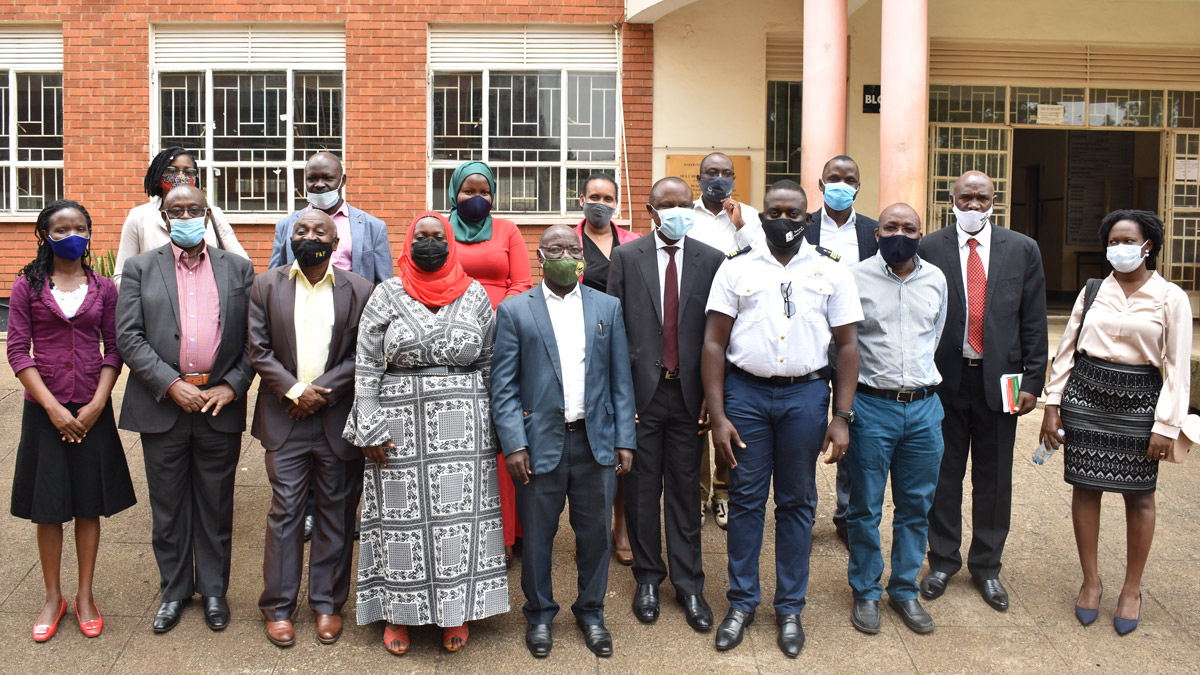
According to statistics from the Uganda Revenue Authority (URA) Annual Data Book 2018/19, at 12.44%, Uganda’s average tax to GDP ratio over the last five years is one of the lowest in the region, and far below the sub-Saharan Africa average of 16%. Simply put, the total tax collected by URA has on average over the past five years accounted for only 12.44% of the size of Uganda’s economy. Comparatively, Kenya, Tanzania, Rwanda and Burundi recorded average tax to GDP ratios of 16.10%, 12.83%, 15.80% and 13.55% respectively over the same period.
This should not come as a surprise, given that 2016 statistics from the Uganda Bureau of Statistics (UBOS) indicated that approximately 98% of Uganda’s population of working age (14-64) were engaged in the informal sector. The title of a 2017 article published by the Economic Policy Research Centre (EPRC) based on the same statistics put it aptly, “Informality Growing Faster than Formality”.
Expanding the tax base by tapping into semi-formal economic activities is going to be one of the major focus areas in the Third National Development Plan (NDPIII) 2020/21-2024/25. It is against this background that researchers in the College of Business and Management Sciences (CoBAMS) led by the Principal, Dr. Eria Hisali conducted a study that sought to understand which gaps exist in tax education and how these gaps can be packaged into improving compliance and subsequently broadening the tax base in Uganda.
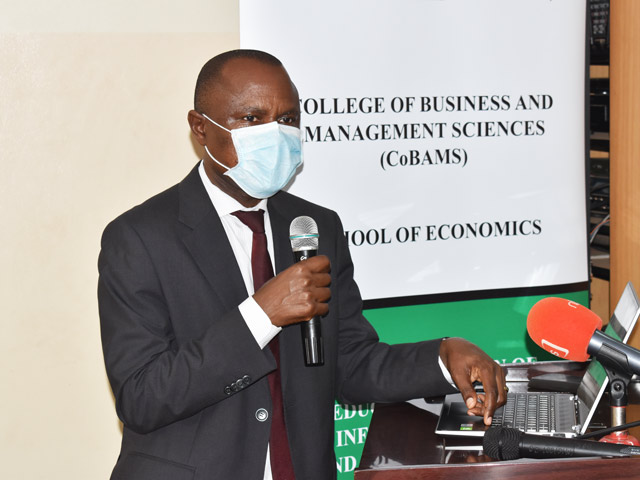
Funded by the Government of Uganda through the Makerere University Research and Innovations Fund (Mak-RIF) the research undertaken in 2020 targeted over 500 respondents with particular focus on the informal sector. In addition to the Principal Investigator (PI) Dr. Eria Hisali, the research team consisted of Dr. Ismail Kintu, Dr. Fred Bateganya, Ms. Marion Atukunda, Ms. Winfred Nalwoga, Mr. Nicholas Musoke, Mr. Patrick Lumala and Dr. Kagarura Willy.
Speaking at the research dissemination workshop held on 10th February 2021 in the School of Business Conference Room, Dr. Hisali shared that “The research advocates for a comprehensive review of Uganda Revenue Authority’s tax education programme with focus on linking tax collection to better service delivery,”
The research team’s interaction with members of the informal sector revealed that tax education being provided is not well suited to the informal sector. “For instance, tax exhibitions, messages on websites and brochures do not provide the best approach to reach out to the informal sector. The informal sector needs more engagement with emphasis on field visits and face-to-face interaction,” explained Dr. Hisali.
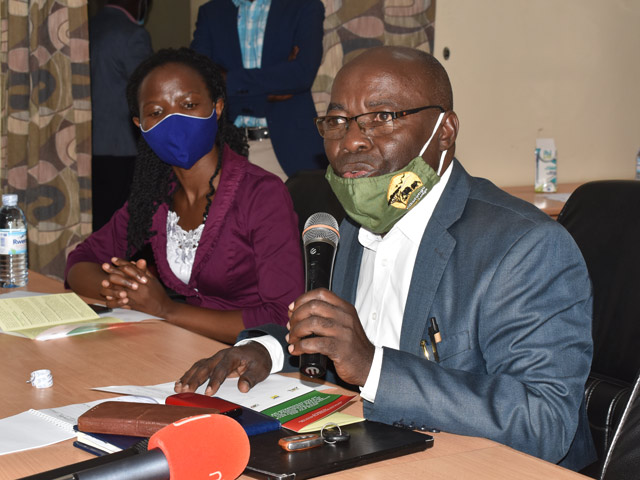
The Principal Investigator however pointed to some quick wins that could be adopted as URA evaluates and updates its tax education programme. He noted that approximately UGX 6 Trillion had been allocated to livelihood programmes by the Government of Uganda between the 2018/19 and current financial years. “How can tax education be included as part of the package that these Government livelihood programmes contain? I think we could see some quick wins because as recipients benefit from livelihood programmes, they could be asked to register as tax payers.”
Findings shared by the research team further revealed a limited coverage of tax education. Whereas 53% had been told or heard about the importance of paying taxes, only 40% had received education on how to register for taxes while only 38% had heard about filing tax returns. Furthermore, only 32% had received tax education on fines and penalties, 29% on the benefits of paying taxes and only 16% on audits and assessments.
Nevertheless, some of the registered respondents who admitted to not paying taxes cited low tax morale as well as poor service delivery and unfairness as reasons for their noncompliance. Researchers further took note of the limited personal touch with potential taxpayers in the informal sector, disconnect between the current taxpayer education modality and unique features of the informal sector, as well as the cost implications and overly technical language in existing modalities as some of the reasons for nonpayment of taxes.
The Study concluded that:
- Majority of the respondents had limited or no knowledge about the Tax Identification Number (TIN), a critical requirement for tax payment. More than half of respondents did not know how to acquire a TIN.
- Actors in the informal sector cannot differentiate between taxes paid to URA and those paid to local governments and other bodies that bring together operators.
- Most respondents did not know how to formalize their business/enterprise, another important factor for tax registration.
- There exists some form of registration of informal businesses/enterprises upon which formalization can build.
- The URA tax education campaigns messaging and targeting has left out some potential tax payers. Messaging and targeting of tax education is key to realizing intended results of growing the tax base and ultimately the tax revenues.
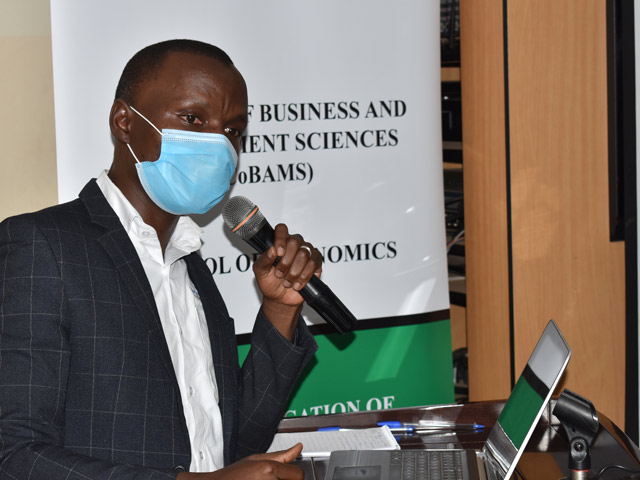
The Research Dissemination attracted participants from URA, Kampala City Traders Association (KACITA), Academia, Private Sector, Civil Society, the Media, Mak-RIF Grants Management Committee (GMC) as well as staff and students from Makerere University.
Painting a picture on the new ideas and innovations to foster a taxpaying culture through tax education, URA’s Mr. Nicholas Musoke who represented the Assistant Commissioner Research Planning and Development-Ms. Milly Nalukwago, noted that whereas Uganda’s population is approximately 45.7million, the taxpayer register stands at only 1.59million. Approximately 953,000 of those registered are active taxpayers, while 906 URA clients pay 80% of the tax. The informal sector currently contributes less than 1% (0.03%) of tax collected.
To help achieve this, URA plans to roll out the AEN strategy. AEN stands for Awareness, Empower and Nurture. Under Awareness, URA intends to intentionally engage the public on tax laws, roles, rights, obligations and opportunities relating to tax. Under Empower, URA will guide taxpayers on their rights as well as how and when to fulfil their tax obligations, while under Nurture, the Authority will set up and support mechanisms to cultivate and maintain a taxpaying culture.
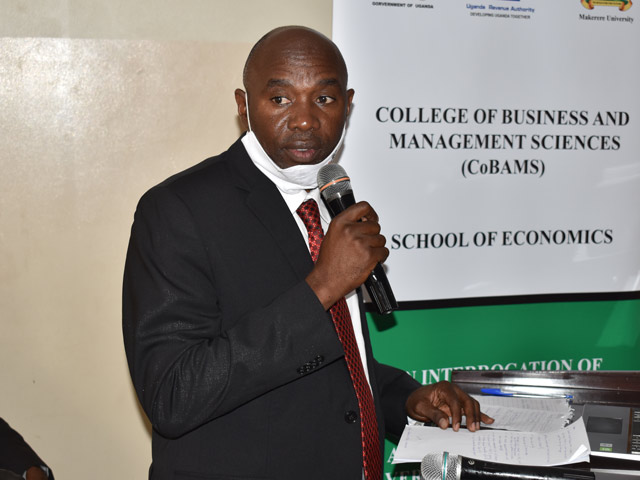
Dr. John Mutenyo who represented the Chairperson of MakRIF GMC- Prof. William Bazeyo in his address commended the Government of Uganda for prioritizing research at Makerere University. “In phase One of Mak-RIF, the Government committed UGX 30billion and this was one of the research projects that
was funded under that phase. To date, over 500 competitive research grants have been supported.”
Prof. Bazeyo congratulated Dr. Hisali and the entire research team for undertaking a study geared towards strengthening the implementation of NDPIII and supporting the development of Uganda. “Most importantly, I would like to thank Dr. Hisali and the team for having a collaborative study that involved the key stakeholders such as URA. These are the stakeholders that are going to make it easy to buy into and implement the outcomes of this research.”
Commenting on the findings, the other stakeholders at the research dissemination workshop pointed out the need to embark on trust building programmes with the taxpayer. They equally emphasised the need to consider reducing the load on the tax payer. The taxpayer in Uganda is subject to taxes such as;
Value Added Tax (VAT), Pay As You Earn (PAYE), Customs, Demurrage, Income Tax, Withholding Tax, Excise Duty, Over-The-Top (OTT)/Social Media Tax among others.
Article by Public Relations Office

You may like
-
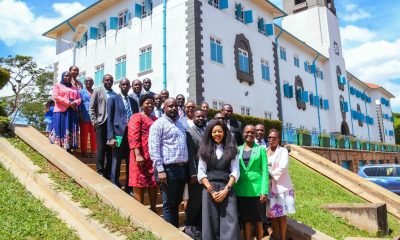

Makerere University Hosts Ambassador Judyth Nsababera for Strategic Dialogue Advancing Uganda–China Engagement
-


In Honor of the Life and Legacy of Mr. Francis Seletze Ngabirano-A Steady Hand through the Storms
-


Illuminating Visionary Leadership: Introducing the Keynote Speaker for the 2025 Emmanuel Tumusime Mutebile Annual Public Lecture
-


16 Days of Activism Campaign Unveiled
-


Erasmus Exchange Prof.’s Mak Photo wins Poland National Prize
-


Dr. Michael Makanga and the Galien Africa Special Career Achievement Prize
Business & Management
KCCA Officials Begin Two-Week Public Investment Management Training in Jinja
Published
2 weeks agoon
November 17, 2025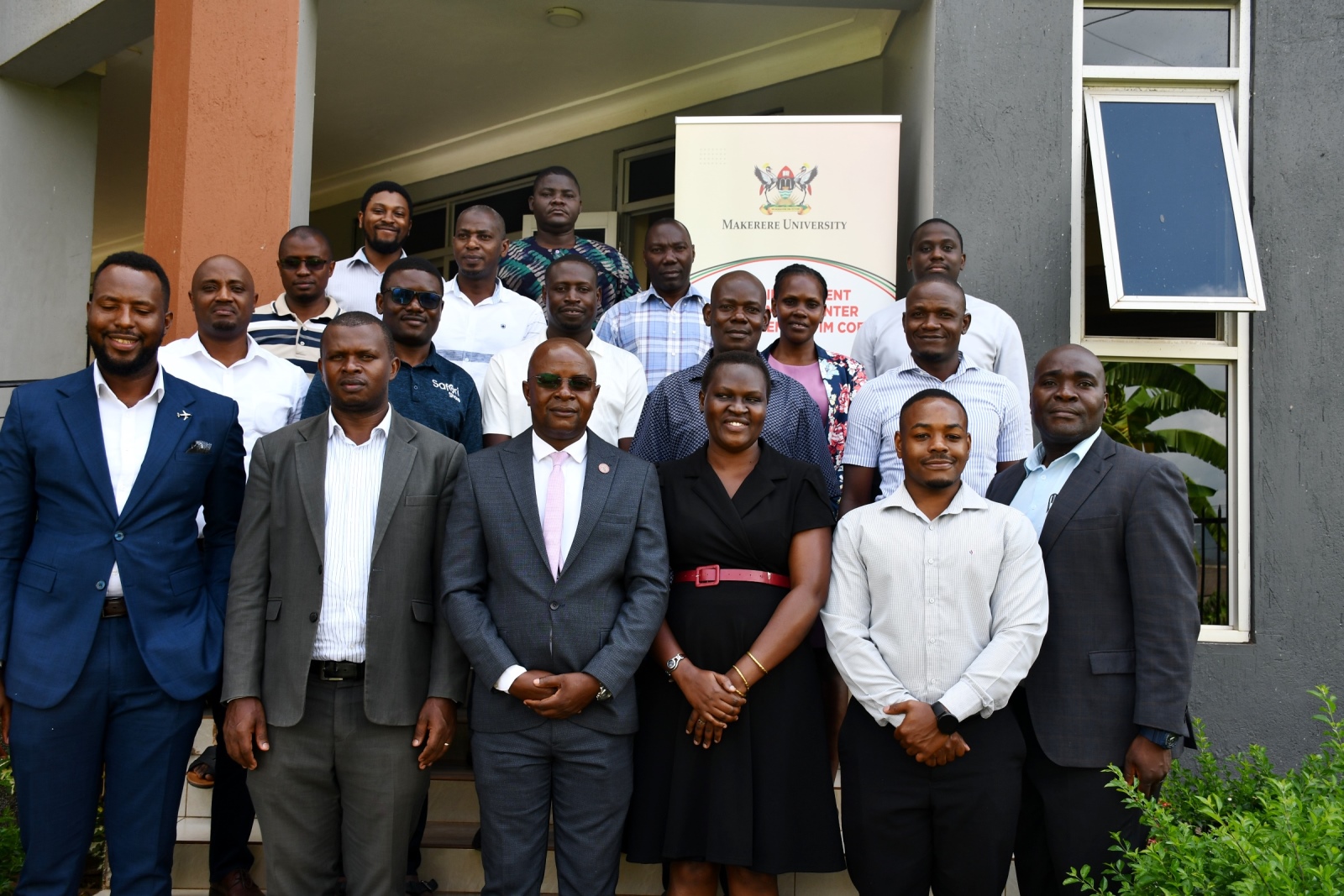
The Public Investment Management Centre of Excellence (PIM CoE), Makerere University, has today, November 17, 2025, officially opened a two-week specialized training in Financial Appraisal and Risk Analysis for officials from the Kampala Capital City Authority (KCCA). The training, fully funded by KCCA, is taking place in Jinja and aims to strengthen the institution’s internal capacity to prepare, analyse, and manage high-quality public investment projects.
The workshop was opened by Prof. Edward Bbaale, Director of the PIM Centre of Excellence and Principal of the College of Business and Management Sciences, who commended KCCA for prioritising continuous professional development in public investment management.
Strengthening Capacity for Better Public Investments
In his opening remarks, Prof. Bbaale expressed deep appreciation to the Ministry of Finance, Planning and Economic Development (MoFPED) for its generous financial support to the PIM Centre of Excellence. He further acknowledged the Ministry’s strategic partnership with Makerere University, which has enabled the Centre to grow into a credible national hub for training, research, and policy dialogue in Public Investment Management.
“This particular cohort is unique and significant,” Prof. Bbaale said. “For the second time, KCCA has fully sponsored its officials to undertake this training, demonstrating strong dedication to improving the quality, efficiency, and overall effectiveness of public investments in the city.”
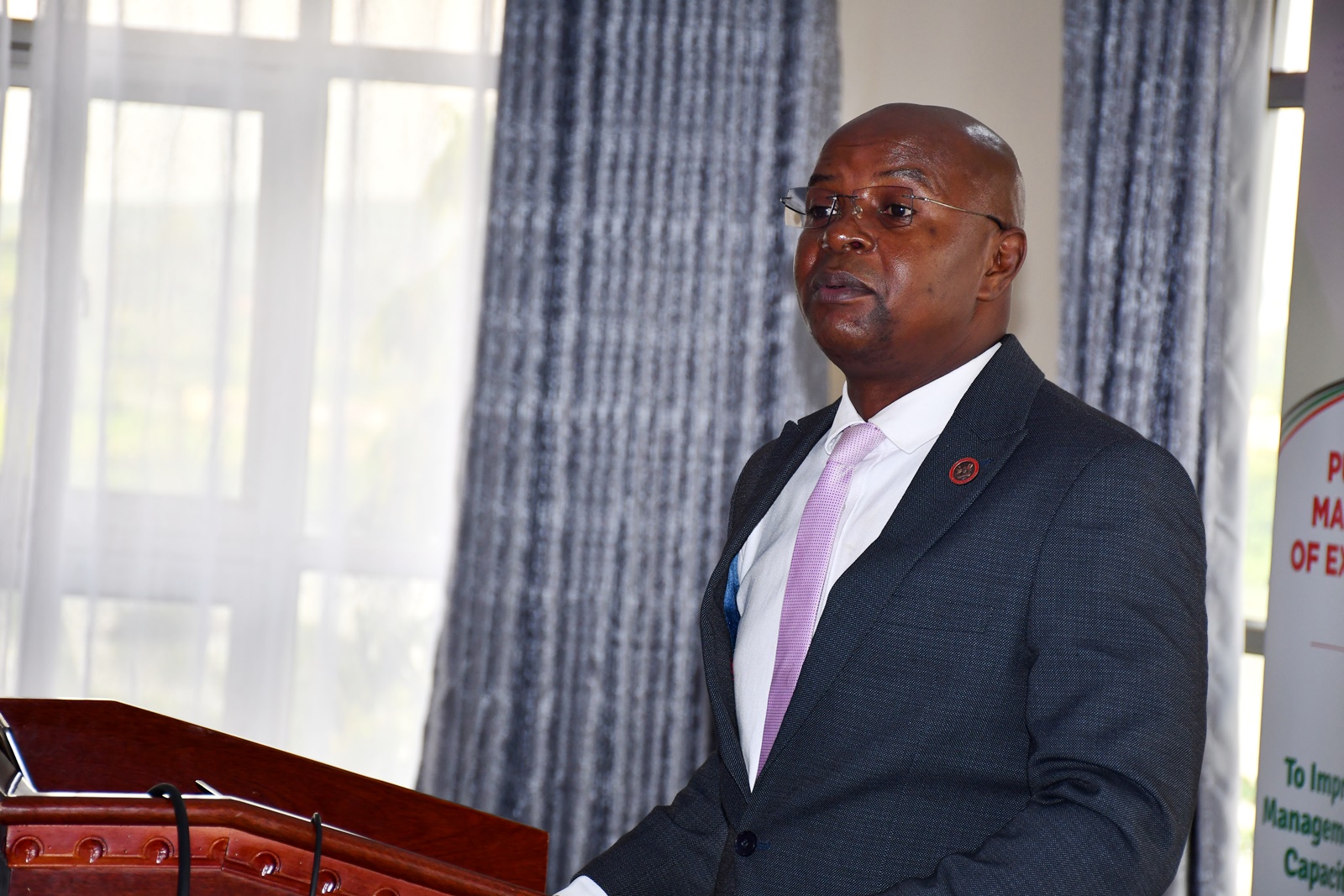
He thanked Makerere University management, faculty members from Makerere, MoFPED, and the National Planning Authority for their continued dedication to knowledge sharing and national capacity development.
From Theory to Hands-On Project Appraisal
Earlier, Dr. John Sseruyange, Manager of the PIM Centre of Excellence, welcomed participants and outlined the structure and importance of the training programme. He emphasized that governments worldwide increasingly require rigorous financial, economic, and risk appraisal of projects before implementation; a standard that Uganda is actively embracing.
Dr. Sseruyange noted that the training is designed to build practical skills in:
- Preparation of project concepts and profiles
- Financial appraisal and modelling
- Economic appraisal and stakeholder analysis
- Integration of climate change, environmental, and social considerations
- Risk analysis using modern tools and techniques
“Our approach blends theory with hands-on practical sessions,” he said. “By the time you complete this course, you will have acquired skills that you can apply to multiple projects beyond the one you analyse here. The goal is to ensure that you become competent project appraisal professionals capable of supporting your institution and the wider public sector.”
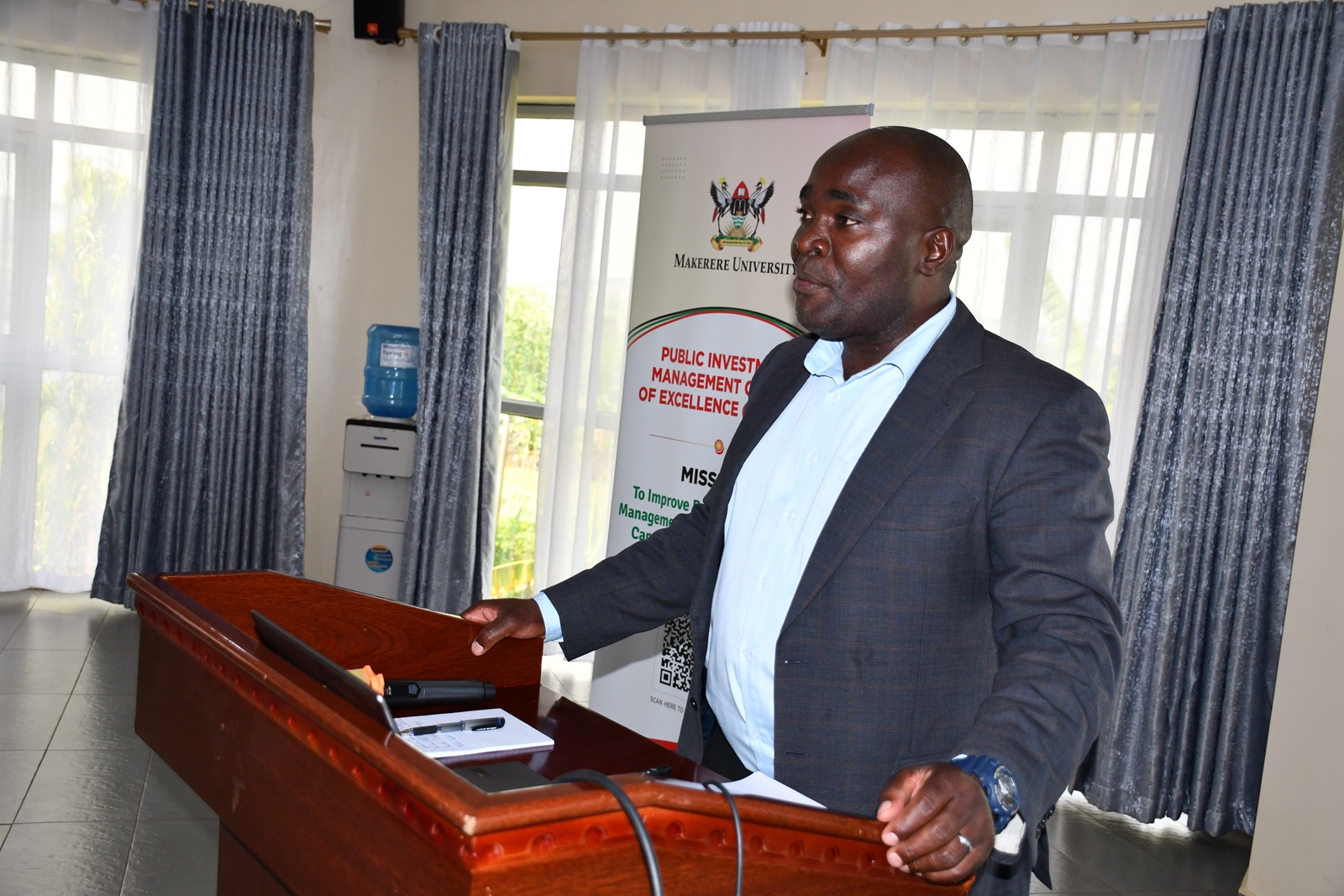
He also highlighted upcoming government requirements starting July 2025, which will extend appraisal to policies, bills, and programmes; skills that participants can also support once trained.
Toward a Stronger Public Investment System
Prof. Bbaale encouraged participants to fully engage in the sessions and take advantage of the opportunity to strengthen their technical competencies. He also invited them to return for the Economic Appraisal module in the near future, after which they will earn a dual certificate issued jointly by Makerere University and MoFPED.
Beyond training, he highlighted the Centre’s recent achievements, including:
- Revision of the Development Committee Guidelines
- Assessment of project performance since NDPI
- Hosting the inaugural Public Investment Management Conferences in 2024 and 2025
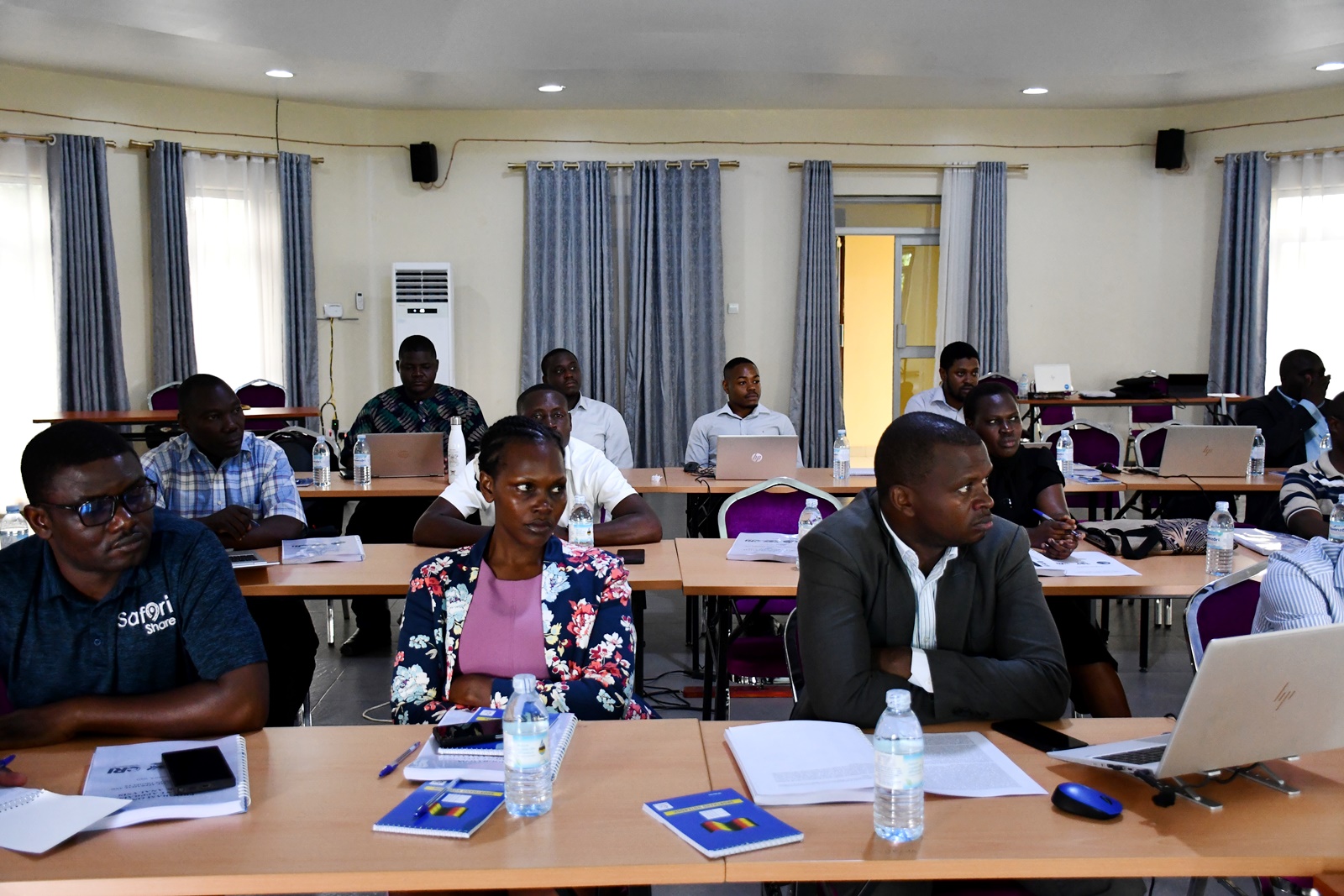
“These efforts demonstrate our commitment to contributing to Uganda’s public investment reform agenda,” he said. “We look forward to partnering with you in research, outreach, and capacity-building initiatives.”
Looking Ahead
The two-week KCCA training marks another milestone in the Centre’s mission to enhance Uganda’s public investment ecosystem. Over the coming days, participants will engage with real-world projects from sectors such as health, roads, education, electricity, water, and energy; equipping them with practical skills essential for driving development in the city and the country. The opening ceremony concluded with a call for collaboration, professionalism, and a shared commitment to improving public investment outcomes for national development.
Business & Management
Uganda National Academy of Science inducts Professor Edward Bbaale as Distinguished Fellow
Published
3 weeks agoon
November 4, 2025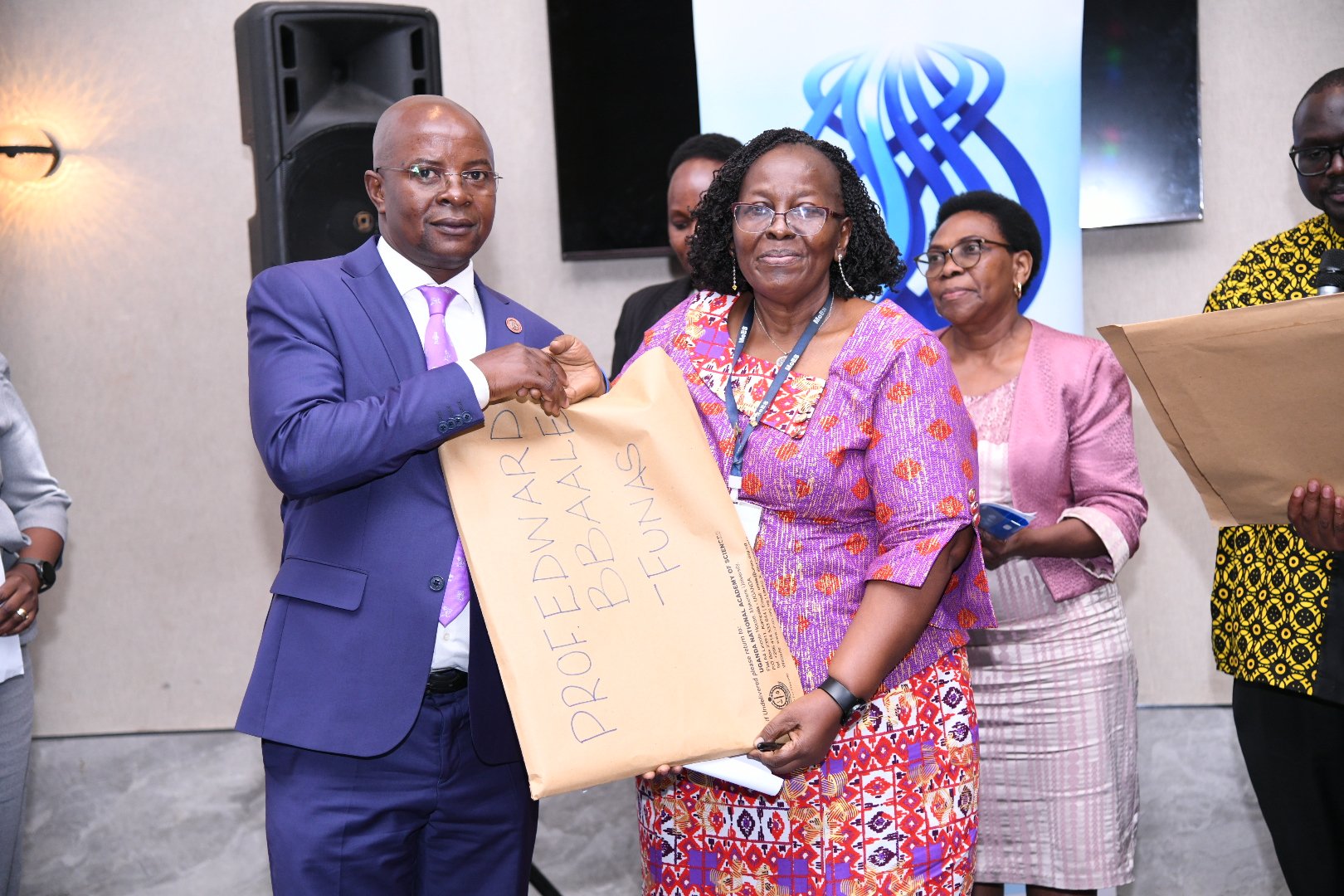
On Friday 31st October 2025, Professor Edward Bbaale, the Principal of the College of Business and Management Sciences, at Makerere University, was inducted into the prestigious fellowship of the Uganda National Academy of Sciences (UNAS).
With this induction into UNAS, Professor Bbaale adds to his numerous national and international awards, the title- Fellow of the Uganda National Academy of Sciences (FUNAS).
Professor Bbaale’s induction as a distinguished Fellow of the Uganda National Academy of Sciences reflects his outstanding scholarly achievements and leadership in advancing research, policy, mentorship and academic development.
The 2025 Induction Ceremony of Fellows symbolizes UNAS’ continued commitment to recognizing and harnessing local intellectual excellence in driving the nation’s path toward self-reliance and sustainable growth.
The induction ceremony provided a platform to celebrate academic excellence, scientific innovation, and national contribution as 27 distinguished scholars were formally received into the prestigious fellowship of the Academy — 9 female and 18 male inductees representing four key disciplines namely: Medical Sciences, Social Sciences, Agricultural Sciences, and Physical Sciences.
Some of the scholars and researchers from Makerere University who were inducted as Fellows include: Professor Edward Bbaale, Professor Helen Nambalirwa Nkabala, Professor Rev. Sr. Dominica Dipio, Associate Professor Egeru Anthony, Professor Nazarius Mbona Tumwesigye, Associate Professor Arthur Tugume, Associate Professor Jackie Bonabana and Associate Professor Frank Mugagga.
According to the UNAS Vice President, Dr. Mary Goretti Nakabugo, the process leading to the fellowship is strictly merit-based, stressing that individuals do not apply for fellowship themselves, specifying that they are nominated in recognition of their exceptional contributions to science and society. She disclosed that when the call is publicized, existing members/fellows propose qualified candidates who meet the set criteria. Highlighting UNAS’s commitment to quality assurance, she revealed that the vetting process is meticulous and time-intensive. “When the vetting is completed, a report is submitted to another committee for further scrutiny before final approval by the UNAS Council,” she explained.

Nomination of Professor Edward Bbaale as Fellow of UNAS:
For induction into the UNAS fellowship, Professor Edward Bbaale was nominated by Dr. Ibrahim Mike Okumu, an Associate Professor and Dean at the School of Economics at Makerere University. The nomination was seconded by Professor Ronald Bisaso, the Deputy Principal of the College of Education and External Studies at Makerere University. Their endorsement highlighted Professor Bbaale’s distinguished academic record, strategic leadership, and impactful contribution to research and economic policy, which have significantly shaped higher education and national development discourse.
Presentation of Professor Edward Bbaale for Induction:
Professor Ronald Bisaso said: “I have the honour to present to you-Professor Edward Bbaale for Induction.”
Edward Bbaale is a Professor of Economics, with research focusing on development microeconomics, holding a PhD in Economics from Johannes Kepler University of Linz, Austria, and both a Master’s and Bachelor’s in Economics from Makerere University. Professor Bbaale, the Principal of CoBAMS, has previously served as Director of Research and Graduate Training, Dean of the School of Economics at Makerere University, and currently leads the Environment for Development Center, the Public Investment Management Center of Excellence, and coordinates the Inclusive Green Economy Program. He also serves as Council Member and Chair of the Humanities and Social Sciences Committee of the Uganda National Council for Science and Technology (UNCST), and as Council Member of Makerere University Business School (MUBS).
“His research focuses on development microeconomics, with over 50 publications in peer-reviewed journals. He has undertaken numerous research projects in collaboration with government and international agencies and has made significant contributions to resource mobilization through competitive grant writing, research support, training, and policy engagement initiatives that advance science and development in Uganda and beyond.
Professor Bbaale commits to advancing research, innovation, scholarship and mentorship:
Following his induction, Professor Edward Bbaale expressed profound gratitude for the honor of being admitted as a UNAS Fellow. He described the recognition as both humbling and deeply inspiring, thanking his nominator, seconder, and the entire UNAS leadership for the confidence and trust they had bestowed upon him. Professor Bbaale noted that being named a Fellow was not merely a personal achievement, but a reaffirmation of his lifelong commitment to advancing the frontiers of knowledge through research, innovation, and mentorship.

Professor Bbaale reflected on the significance of the honor as a renewed responsibility to contribute even more meaningfully to Uganda’s scientific and socio-economic transformation. He emphasized that the role of scientists extends beyond academia, underscoring the need to apply research and evidence-based insights to address real societal challenges and inform national policy.
Professor Bbaale pledged to continue fostering a culture of inquiry, collaboration, and excellence among emerging scholars, particularly those in the fields of economics, development, and public policy. He thus dedicated his induction to the next generation of scientists, affirming his commitment to guide and empower them to use science and knowledge as powerful tools for national progress and sustainable development.
“I am greatly humbled for this honor. To me, this confidence and trust is a unique call to contribute more in science and research, and also to nurture and build up the next generation of scientists,” stated Professor Bbaale.
UNAS Fellows tasked to be agents of national and community development:
The President of the Uganda National Academy of Sciences (UNAS), Professor Grace Bantebya Kyomuhendo, congratulated the newly inducted Fellows and officially welcomed them to the Academy, urging them to remain active and committed to advancing science and service to society. She commended the new Fellows for their remarkable achievement, noting that induction into UNAS is both an honor and a responsibility.
“Having accepted and signed our book of records, I officially congratulate and welcome you as new Fellows of the Uganda National Academy of Sciences . May you always remember this occasion and strive to live up to the aims and ideals of this Academy in all your professional and personal endeavors,” said Prof. Bantebya Kyomuhendo.

Professor Bantebya Kyomuhendo reminded the new fellows that the honor of induction carries the enduring responsibility to use their knowledge and influence to serve the country and uplift their communities, “After being inducted as members of UNAS, please remain in touch and active. As UNAS, we want to use science to serve our country and our communities. We must give back to society,” she urged.
UNAS President highlights the importance of trust, core responsibilities and obligations:
Reflecting on the UNAS Annual Scientific conference theme, “Renewal from Our Roots: Uganda’s Path to Self-Reliance and Self-Sufficiency,” Professor Bantebya Kyomuhendo encouraged participants to draw strength from Uganda’s cultural and intellectual heritage, noting that the nation already possesses within itself the foundation for growth through its culture, heritage, and shared history, which she said form the roots from which self-reliance and self-sufficiency can be nurtured.
She underscored the importance of trust as a cornerstone for development and progress. “The concept of trust has come up a lot — trust at individual, family, community, and national levels. As we move forward, we must build and strengthen trust, for it is through trust that we can harness the potential within us and the resources around us,” she said.
Professor Bantebya Kyomuhendo outlined to the newly inducted fellows the core responsibilities and obligations that come with being a Fellow of the Academy. She highlighted that fellowship is both an honor and a responsibility, requiring dedication to scientific excellence, ethical leadership, and service to the nation. She emphasized that Fellows must uphold the UNAS Constitution, contribute to the Academy’s mission, vision and objectives. She urged them to remain active in their fields, participate in Academy activities, maintain high standards of conduct, and foster positive relationships within the scientific community and the public.

UNAS Vice President elaborates the quality assurance measures for selection of Fellows:
Speaking about the induction process, Dr. Mary Goretti Nakabugo, the UNAS Vice President articulated the thorough and transparent procedure followed in identifying and approving new Fellows. She explained that the Fellows and Membership Committee, guided by the UNAS Constitution, works closely with the Secretariat to open a window for nominations, during which existing members propose qualified candidates who meet the set criteria. She noted that each nomination is supported by a nominator and a seconder and accompanied by detailed documentation demonstrating the nominee’s qualifications and contributions.
“When we advertise, members of UNAS nominate those who are eligible to become inductees. We have a nomination form that outlines all the criteria and requirements for one to be considered. This form is filled by the nominee, with the assistance of the nominator, and it is usually supported by a seconder. Once the documentation is complete, it is submitted to us,” the Vice President explained.
She extended her appreciation to the Secretariat and organizing team for their dedication in ensuring the success of the UNAS Annual Scientific conference and induction ceremony. She lauded the excellent panels, engaging discussions, and the spirit of collaboration that characterized the event, emphasizing that it was through collective effort that the meeting had been successful.
Business & Management
Brewing Innovation: 9th Annual Youth Expo showcases enterprises in Uganda’s coffee value chain
Published
1 month agoon
October 21, 2025
By Ritah Namisango and Monica Meeme
On 17th October 2025, the Makerere University Freedom Square was a beehive of activity as over 600 students from the College of Business and Management Sciences (CoBAMS) participated in the 9th Annual Innovation and Youth Expo.
Organized by the Makerere University Entrepreneurship and Outreach Centre, the 2025 Innovation and Youth Expo, focused on Uganda’s most strategic Agricultural sector – COFFEE.
Under the theme, Brewing Prosperity: Youth Entrepreneurship in Uganda’s Coffee Value Chain, student entrepreneurs exhibited more than 300 innovations including youth coffee brands, brewing demonstrations, agri-tech prototypes, live cupping sessions, among others.
The Youth Expo focused on amplifying youth-led innovations across the entire coffee value chain—from farm to cup, providing a hands-on, interactive platform for young entrepreneurs to exhibit their products, prototypes, and business ideas, while engaging directly with industry stakeholders.
By placing the youth at the center of the value chain, the Youth Expo demonstrated the untapped potential of innovation, creativity, and enterprise among Uganda’s next generation of entrepreneurs.
Student innovations for real-world impact:
The Director of the Makerere University Entrepreneurship and Outreach Centre, Dr. Sarah Bimbona, urged students to view their innovations not just as academic projects, but as the starting point for real-world impact.
“These innovations should not just end here or be seen as projects for marks. Continue nurturing those dreams, take them further, and make them a reality,” she advised.
She recognized the critical role of faculty and mentors, specifically appreciating them for their tireless support in guiding students through their innovation undertakings.
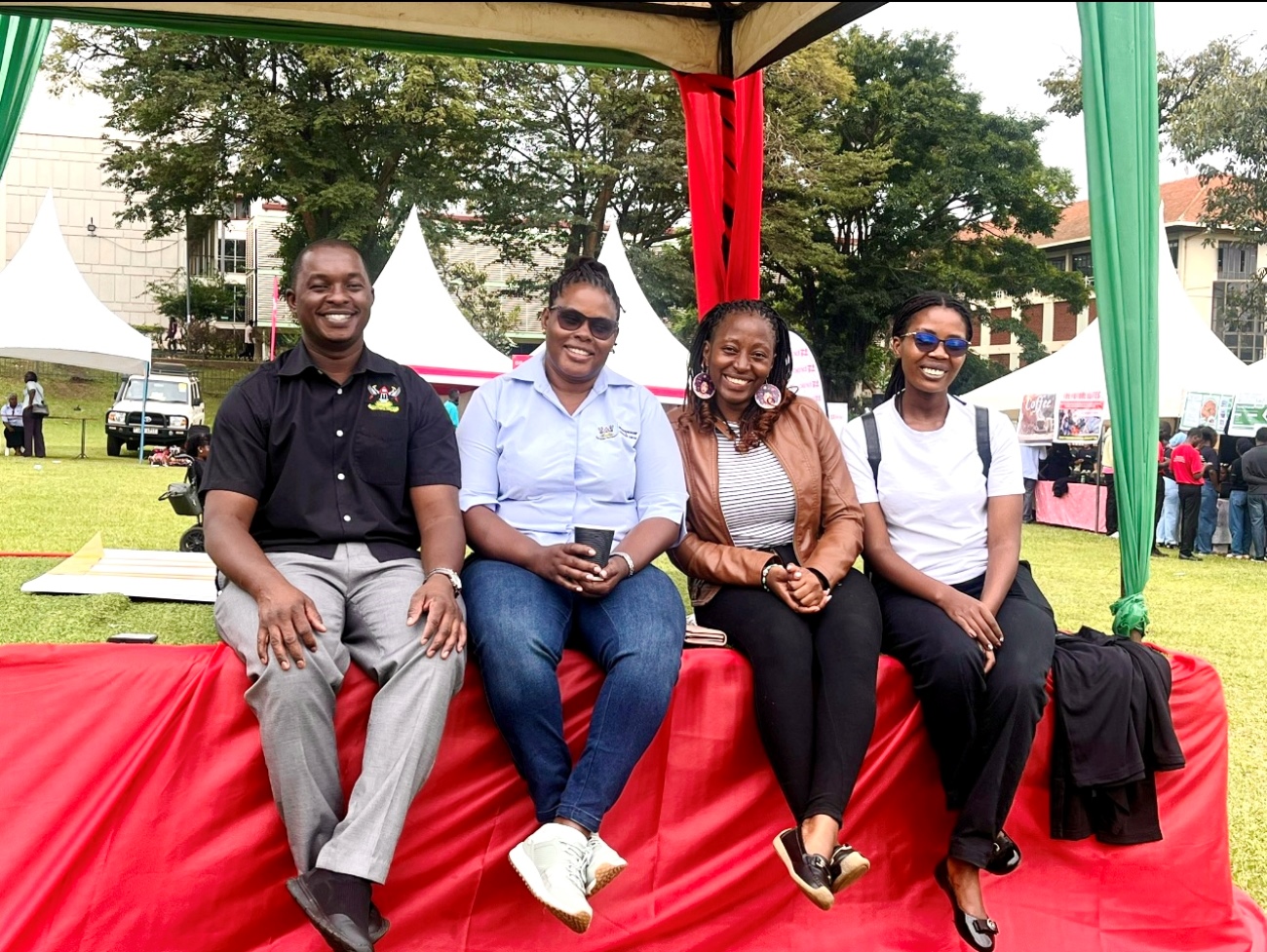
Dr. Bimbona emphasized the importance of linking academic learning with practical enterprise, highlighting that student-led innovations have the potential to create meaningful economic and social change.
Students encouraged to embrace entrepreneurship:
The Dean, School of Business, Associate Professor Godfrey Akileng specified that entrepreneurship is one of the flagship initiatives of the College of Business and Management Sciences. He encouraged the students to seize the moment. “This is your opportunity to showcase your innovations, to interact with industry players, and to change your mindset from job-seekers to job creation,” he said. “Let the entrepreneurship Expo awaken a new spirit in you-one that says-yes, I can make it.”
Associate Professor Akileng cited the story of Bill Gates as an example of what determination and innovation can achieve, reminding the students that greatness often starts from simple beginnings. “There is no reason we cannot build something extraordinary from coffee and other local products,” he stated, emphasizing the value of entrepreneurship in national transformation.
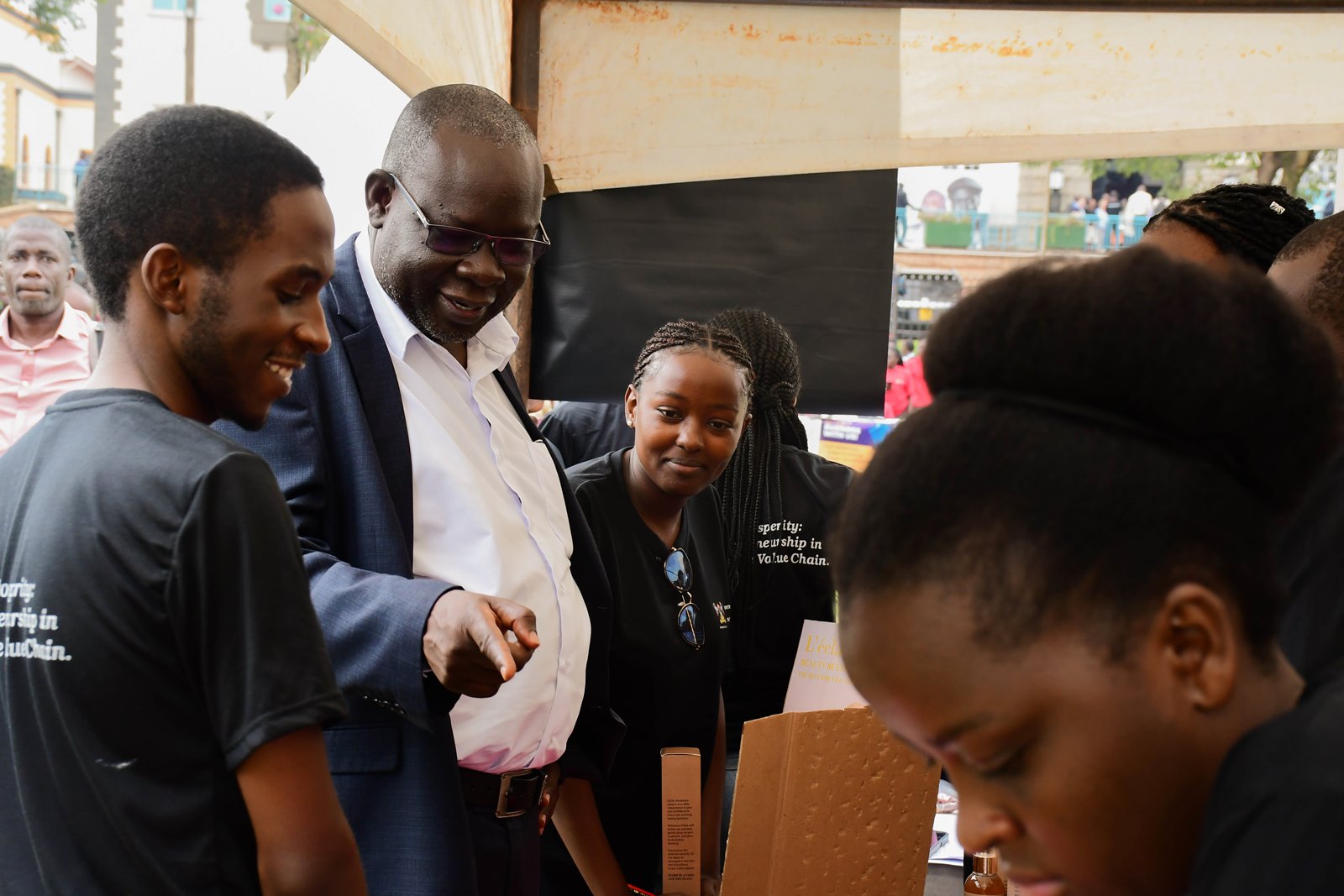
The Dean, School of Business, expressed deep appreciation to the industry partners for their collaboration and generosity. “You have invested time, knowledge and financial support to be here. Thank you for supporting the Entrepreneurship Congress and Expo,” he remarked.
BRAC Uganda participates in the Expo:
The Communications Officer of BRAC Uganda, Ms. Barbra Ampaire, stressed that BRAC aims to equip youth with the tools and knowledge to discover and maximize their potential.
“We have supported thousands of youth through tailored programs in areas such as tailoring, livestock farming, agribusiness, financial literacy, and value addition. These initiatives are supported not just with training, but also with seed capital, equipment, and ongoing mentorship,” she said.

Ms. Ampaire noted that Makerere University, being a hub for students and young innovators, aligns perfectly with BRAC’s focus on empowering youth while they are still developing their ideas and ambitions.
A case for domestic consumption and local processing:
One of the participants from the BRAC Scholar Transition Fund, Mr. Godwin Birungi, emphasized the need for domestic consumption and local processing, highlighting that exporting raw coffee reduces employment opportunities and stunts economic growth.
“When we consume and process our coffee locally, we not only improve public health, but also create jobs and stimulate our economy.”
He encouraged young entrepreneurs to embrace patience, maintain consistency in their efforts, and stay focused on their goals, emphasizing that building a successful and sustainable business is a gradual process that requires dedication and resilience.

“Building a sustainable business takes time. Many successful entrepreneurs spent over a decade before making a profit. Find your passion, refine your strategy, and stay the course.” he said.
Student entrepreneurs speak out:
The Marketing Manager of Victory Cakes students’ enterprise, Ms. Keziah Nasenga, explained that the team offers two main product variations including coffee cupcakes with icing and those without, catering to different customer preferences.
She noted that the cupcakes are crafted using brewed coffee mixed with hot water, then blended with traditional baking ingredients such as flour, vanilla, and other flavor-enhancing components.
A student from the Ring Hair Stimulator group, Ms. Martha Alwe, said their product is a premium hair care solution designed to promote healthy hair growth, prevent breakage and hair loss in women, and enhance beard growth in men through a specialized beard oil.

“The full product line includes beard growth oil, hair shock treatment, hair spray, leave-in conditioner, and hair growth shampoo each carefully developed to address a wide range of hair care needs with quality and effectiveness,” she said.
The Marketing Manager of the team of Coffee Cupcake, Ms. Catherine Nasaazi, explained that the shampoo is enriched with sodium benzoate, tea tree oil, and other ingredients.
Precursor to the Youth Expo:
The 3rd Uganda Entrepreneurship Congress held on 16th October 2025 at Makerere University Yusuf Lule Central Teaching Facility Auditorium, provided a perfect transition into the 9th Annual Makerere University Youth Expo held on 17th October 2025 at the Freedom Square.
During the Uganda Entrepreneurship Congress, students listened to lived experiences and case presentations from young, mid-level and senior entrepreneurs. The panelists who discussed topics on Market Readiness, Value Addition and Story Telling, as well as, Financing the Future, enlightened the students and upcoming entrepreneurs to creating impact, access to markets and capital, and breaking the barriers in a competitive world.
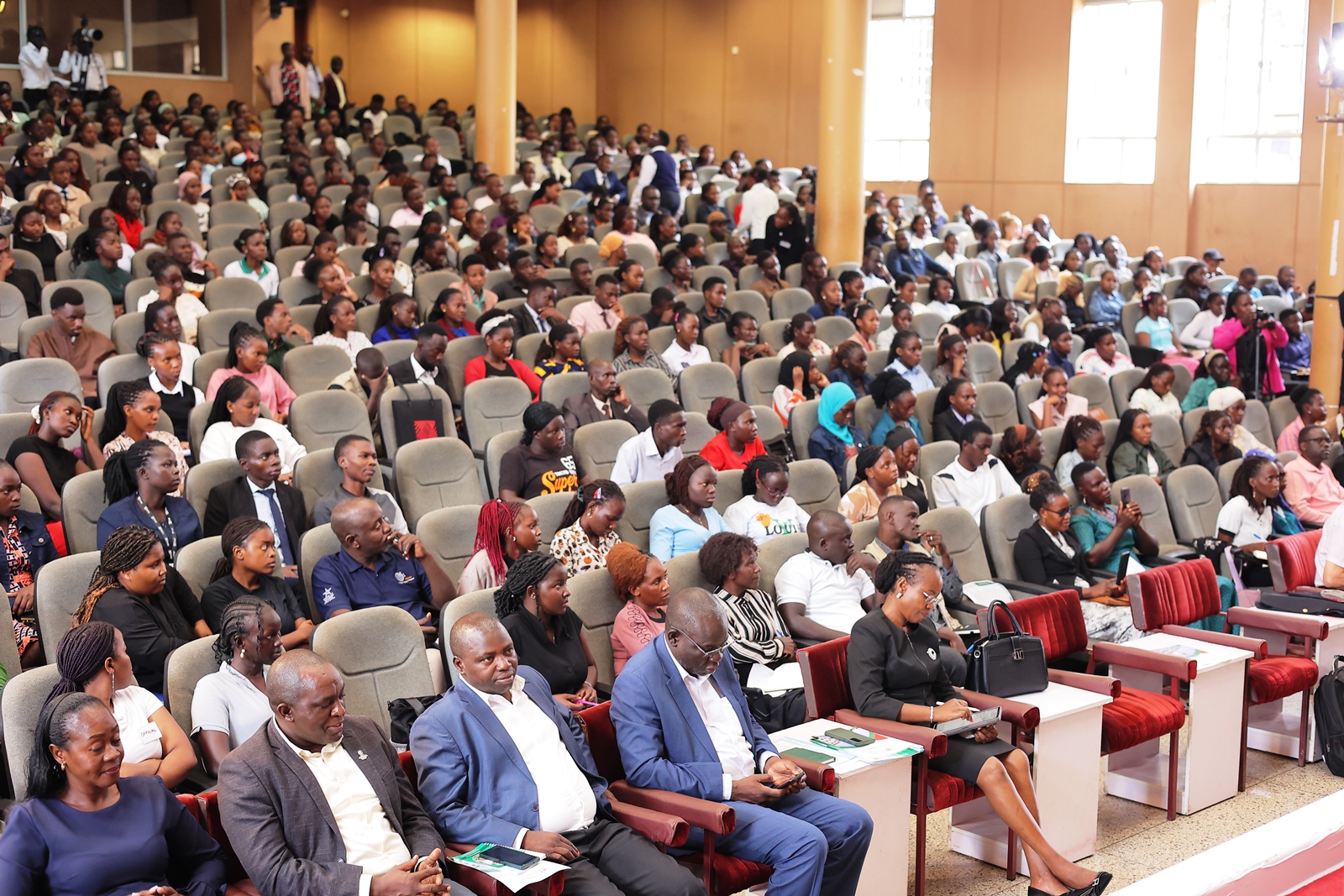
The students gained valuable knowledge from the Chief Guest-Mr. Odrek Rwabwogo, Chair of the Presidential Advisory Committee on Exports and Industrial Development, and the Keynote Speaker- Mr. Moses Nyabila, CEO of aBi Development Ltd.
Mr. Rwabwogo challenged the young entrepreneurs to think beyond Uganda’s borders, when he highlighted that true entrepreneurship lies in producing goods that can compete on the international market.
“When you build a business that can sell in another person’s market, you are a hero or heroine because what you have done is disrupting the status quo, which praises imports over exports. In this country, for instance in Kikuubo business area, you hear statements such as my container is about to reach Uganda, and not my container is leaving the yard in Uganda and is taking avocado to Spain or another country. I want the language to change.”
Partners of the Uganda Entrepreneurship Congress and Youth Expo: Makerere University (Mak), Ministry of Agriculture, Animal Industry and Fisheries (MAAIF), National Coffee Research Initiative (NaCORI), BRAC Uganda, Tooke, Mastercard Foundation Scholars Program at Makerere University, Vision Group, Mountain Harvest, Pepsi, Rainforest Alliance, Sumz, and the Banana Industrial Research & Development Centre.
Writers: Ritah Namisango, Principal Communication Officer at Makerere University & Monica Meeme, a student of Bachelor of Journalism and Communication at Makerere University.
Trending
-
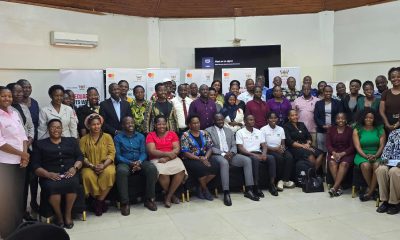
 General2 weeks ago
General2 weeks agoMakerere University officially commences implementation of its Mentorship Policy
-

 General3 days ago
General3 days agoIn Honor of the Life and Legacy of Mr. Francis Seletze Ngabirano-A Steady Hand through the Storms
-

 Engineering, Art & Tech4 days ago
Engineering, Art & Tech4 days agoErasmus Exchange Prof.’s Mak Photo wins Poland National Prize
-
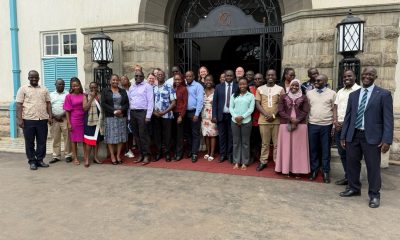
 Agriculture & Environment1 week ago
Agriculture & Environment1 week agoStrengthening Capacity and Shaping Policy: Makerere University Reviews Progress of MERIT and Environmental Risk Research Programs
-

 General3 days ago
General3 days agoMakerere Students share experiences, connections and inspiration at inaugural For Youth, By Youth Conference in Turkey